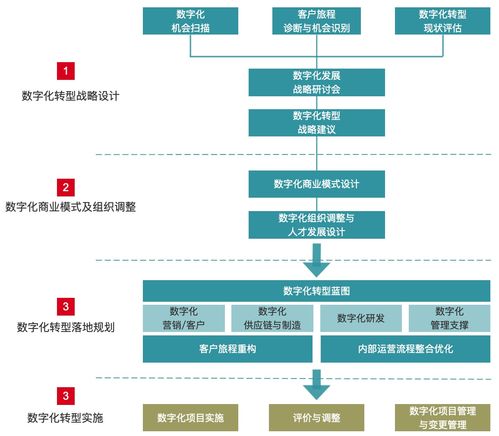概述
我们前两节介绍的Spring Security的身份认证的用户和密码在启动服务器后自动生成、代码写死或者存储到内存中,但是在实际项目中需要从动态的数据库中获取用户信息进行身份认证。Spring Security提供了一个UserDetailsService实现类JdbcUserDetailsManager来帮助我们以JDBD的方式对接数据库和Spring Security。

项目准备
添加依赖
我们使用的数据库是mysql,查询数据方式使用的是mybatis-plus因此需要引入mysql驱动和mybatis-plus依赖。
<!--mysql驱动-->
<dependency>
<groupId>mysql</groupId>
<artifactId>mysql-connector-java</artifactId>
<scope>runtime</scope>
</dependency>
<!--mybatis-plus-->
<dependency>
<groupId>com.baomidou</groupId>
<artifactId>mybatis-plus-boot-starter</artifactId>
<version>3.5.1</version>
</dependency>
添加数据库配置
我们添加过依赖以后,需要在application.yml中添加数据库链接,实现如下:
spring:
datasource:
url: jdbc:mysql://localhost:3306/mybatis?useUnicode=true&serverTimezone=Asia/Shanghai&characterEncoding=utf-8&useSSL=false
username: root
password: root
driver-class-name: com.mysql.cj.jdbc.Driver
在这里数据库的默认链接是mybatis数据库,用户名是root,密码是root,读者可以根据实际情况,自行修改
创建user和权限表:
我们这个只是实例,所以只创建一个简单的用户(sys_user)和权限(sys_authorities)两张表,sql如下:
DROP TABLE IF EXISTS sys_user;
CREATE TABLE sys_user
(
`id` BIGINT(20) NOT NULL COMMENT '主键ID',
`username` VARCHAR(30) NOT NULL COMMENT '姓名',
`password` VARCHAR(64) NOT NULL COMMENT '密码',
`age` INT(11) NULL DEFAULT NULL COMMENT '年龄',
`email` VARCHAR(50) NULL DEFAULT NULL COMMENT '邮箱',
`enabled` INT(11) not NULL DEFAULT 1 COMMENT '0无效用户,1是有效用户',
`phone` VARCHAR(16) NULL DEFAULT NULL COMMENT '手机号',
`create_time` DATETIME NULL DEFAULT CURRENT_TIMESTAMP ON UPDATE CURRENT_TIMESTAMP COMMENT '角色的创建日期',
PRIMARY KEY (id)
)
COMMENT='用户信息表'
COLLATE='utf8mb4_unicode_ci'
ENGINE=InnoDB;
DROP TABLE IF EXISTS sys_authorities;
CREATE TABLE `sys_authorities` (
`id` INT(11) NOT NULL AUTO_INCREMENT,
`user_id` INT(11) NOT NULL DEFAULT '0' COMMENT '角色自增id',
`authorities` VARCHAR(50) NULL DEFAULT NULL COMMENT '权限',
PRIMARY KEY (`id`)
)
COMMENT='用户权限关系表'
COLLATE='utf8mb4_unicode_ci'
ENGINE=InnoDB;
INSERT INTO sys_user (id, username,password, age, email,phone) VALUES
(1, 'admin', '$2a$10$ziavqzahP2o0q6XPIEVLNOODYAdRIbJHa1v2xQwbg.6xT2y6q2lzO',18, 'test1@baomidou.com',13333835911);
INSERT INTO sys_authorities (id, user_id,authorities) VALUES
(1, 1, 'admin');
实体类
创建sys_user和sys_authorities两张表对应的实体类。
sys_user实体类。
@Data
@TableName("sys_user")
public class UserEntity {
private Long id;
private String username;
private String password;
private Integer age;
private String email;
private Integer enabled;
private String phone;
}
sys_authorities实体类。

@Data
@TableName("sys_authorities")
public class AuthoritiesEntity {
private Long id;
private String UserId;
private String authorities;
}
实现两个实体类的Mapper
我们使用mybatis-plus实现这两个实体类的mapper,因为这样我们(例子)可以减少代码。
public interface UserMapper extends baseMapper<UserEntity> {
}
public interface AuthoritiesMapper extends baseMapper<AuthoritiesEntity> {
}添加@MapperScan注解
在main入口类上添加@MapperScan("com.security.learn.mapper")注解。
@MapperScan("com.security.learn.mapper")
@SpringBootApplication
public class SpringSecurityLearn3Application {
public static void main(String[] args) {
SpringApplication.run(SpringSecurityLearn3Application.class, args);
}
}UserDetailsService的实现
我们需要自定义个UserDetailsService接口的实现类CustomUserDetailsService,用于实现UserDetailsService接口中的loadUserByUsername方法,通过该方法定义获取用户信息的逻辑。
UserDetailsService接口。
CustomUserDetailsService的代码实现。
@Slf4j
@Service("customUserDetailsService")
public class CustomUserDetailsService implements UserDetailsService {
@Autowired
private UserMapper userMapper;
@Autowired
private AuthoritiesMapper authoritiesMapper;
@Override
public UserDetails loadUserByUsername(String username) throws UsernameNotFoundException {
log.info("认证请求: "+ username);
QueryWrapper<UserEntity> wrapper = new QueryWrapper<>();
wrapper.eq("username",username);
List<UserEntity> userEntities = userMapper.selectList(wrapper);
if (userEntities.size()>0){
QueryWrapper<AuthoritiesEntity> wrapper1 = new QueryWrapper<>();
wrapper.eq("userId", userEntities.get(0).getId());
List<AuthoritiesEntity> authorities = authoritiesMapper.selectList(wrapper1);
return new User(username, userEntities.get(0).getPassword(), AuthorityUtils.createAuthorityList(authorities.toString()));
}
return null;
}
}
重构configure(AuthenticationManagerBuilder auth)方法
重新实现configure(AuthenticationManagerBuilder auth)方法。
- 在LearnSrpingSecurity类中注入customUserDetailsService。
- 在configure(AuthenticationManagerBuilder auth)方法中指定认证用户方式。
代码实现如下:
@Autowired
private UserDetailsService customUserDetailsService;
@Override
protected void configure(AuthenticationManagerBuilder auth) throws Exception {
//super.configure(auth);
// auth.inMemoryAuthentication()
// .withUser("admin")
// .password(passwordEncoder.encode("123456"))
// .roles("admin")
// .authorities("Role_admin")
// .and()
// .passwordEncoder(passwordEncoder);//配置BCrypt加密
auth.userDetailsService(customUserDetailsService);
}
测试
启动项目,访问http://localhost:8888/login/page。

使用账号密码结果为:
账号:admin。
密码:123456。
免责声明:本平台仅供信息发布交流之途,请谨慎判断信息真伪。如遇虚假诈骗信息,请立即举报
举报






